back to WRITINGS
The Parametricist Epoch: Let the Style Wars Begin
Patrik Schumacher, London 2010
Published in: AJ - The Architects’ Journal, Number 16, Volume 231, 06. May 2010
Can there be a unified style for the 21st Century?
Yes there can. In 2008 the author first communicated that a new, profound style has been maturing within the avant-garde segment of architecture during the last 10 years. It seemed urgent that the style acquires a name in order to recognize itself as well as to be recognized in the world at large. Therefore “parametricism” was enunciated during the 11th Venice Architecture Biennale1. The term has been since circulating and gathering momentum - largely via critical challenges2 - within the architectural discourse. So far, this event remained largely confined within architecture. However, one might suspect that the news will spread quickly once it has been picked up somewhere in the mass media. Outside architectural circles “style” is virtually the only category through which architecture is observed and recognized. A named style needs to be put forward in order to stake the claim to act in the name of architecture.
What complicates matters is that the concept of style(s) has long since been losing traction within the architectural discourse. Therefore the announcement of parametricism involves two simultaneous discursive moves: the presentation of a new vital architectural movement and the reassertion of the concept of style(s) as valid and productive category of discursive orientation and self-description.
The concept of style(s) deserves to be defended. To let this concept wither away would only impoverish the discourse within architecture. This would also imply the renunciation of a powerful asset for communicating architecture into society. However, the resuscitation of this drained and battered concept requires conceptual reconstruction in terms that are intellectually credible today.
What stands in the way of such a reconstruction is the tendency to regard style to be a merely a matter of appearance as well as the related tendency to confuse styles with superficial, short-lived fashions. Although aesthetic appearance matters enormously in architecture and design, neither architecture as whole nor its styles can be reduced to mere matters of appearance. Neither must the phenomenon of styles be assimilated to the phenomenon of fashion. The concept of style(s) must therefore be sharply distinguished and cleansed of all these trivializing and distracting connotations. It denotes the unity of the difference between the architectural époques of the Gothic, Renaissance, Baroque, Classicism, Historicism and Modernism. The historical self-consciousness of architecture demands the revitalization of the concept of style(s) as a profound historical phenomenon that can be projected into the future. For this purpose the author has proposed that architectural styles are best understood as design research programmes conceived in analogy to the way paradigms frame scientific research programmes3. A new style in architecture/design is akin to a new paradigm in science: it redefines the fundamental categories, purposes, and methods of a coherent collective endeavour. Innovation in architecture proceeds via the progression of styles so understood. This implies the alternation between periods of cumulative advancement within a style and revolutionary periods of transition between styles. Styles represent long, sustained cycles of innovation, gathering the design research efforts into a collective movement so that individual efforts are mutually relevant, spurning and enhancing.
From the inside, within architecture, the identification of parametricism demarcates and further galvanizes a maturing avant-garde movement and thus might serve to accelerate its progress and potential hegemony as a collective research and development effort. At least this is the author’s hope and motivation. As a piece of retrospective description and interpretation the announcement of parametricism seems justified given 10 years of consistent, cumulative design research. Prospectively the announcement of the style should further consolidate the attained achievements and prepare the transition from avant-garde to mainstream hegemony. The author believes that parametricism finally offers a credible, sustainable answer to the drawn out crisis of modernism that resulted in 25 years of stylistic searching. Parametricism is the great new style after modernism.4 Post-modernism and Deconstructivism were mere transitional episodes, similar to Art Nouveau and Expressionism as transitions from Historicism to Modernism. The distinction of epochal styles from transitional styles is important. In a period of transition there might emerge a rapid succession of styles, or even a plurality of simultaneous, competing styles. The crisis and demise of modernism lead to a deep and protracted transitional period, but this is no reason to believe that this pluralism cannot be overcome by the hegemony of a new unified style. The potential for such a unification is indeed what we are witnessing.
Besides epochal styles and transitional styles we can identify subsidiary styles that emerge under the umbrella of epochal styles. These subsidiary styles represent either parallel variations or historical sequences that enrich and progress the respective epochal style. Within Historicism we can distinguish Neo-classicism, Neo-gothic, Neo-renaissance, Neo-baroque and Ecclecticism. Within modernism we can distinguish Functionalism, Rationalism, Organicism, Brutalism, Metabolism and High-Tech. All these subsidiary styles adhere fully to the basic design principles of modernism: separation and repetition, i.e. separation between specialized subsystems and repetition within each subsystem. Postmodernism and deconstructivism reject the order of separation and repetition by posing historical diversity and then diversity via collage and superposition (without establishing a new order). Parametricism is able to recuperate and enhance the deconstructivist moves within a new capacity to create diversity within a complex order. The modernist order of separation and repetition is being supplanted by the parametricist order of continuous differentiation within systems and intensive correlation across systems. Within the broad new paradigm of parametricism many subsidiary styles might be expected to enrich and progress the coming époque of parametricism.
The experience of modernism’s crisis and its architectural aftermath - together with the failure to distinguish epochal styles, from transitional and subsidiary styles - has lead many critics to believe that our civilization (and this means today global civilization) can no longer be expected to forge a unified style. Did the profound developmental role of styles in the history of architecture as it is evidenced in the sequence gothic-renaissance-baroque-historicism-modernism come to an end? Did history come to an end? Or did it fragment into crisscrossing and contradictory trajectories? If so, are we to celebrate this fragmentation of efforts under the slogan of pluralism?
Architecture today is world architecture. Every architectural project is immediately exposed and assessed in comparison to all other projects. Global convergences are possible. This does not spell homogenization and monotony. It merely implies a consistency of principles, ambitions and values to build upon so that different efforts add up, are relevant to each other, compete constructively with each other, to establish the conditions for cumulative progress rather than pursuing contradictory efforts that misconstrue and deny each other, going round in circles by continuously battling over fundamentals. This is the idea of a unified style, initially as a unified avant-garde design research programme, and eventually as a unified system of principles, ambitions and values that constitute global best practice.
Conceptual and Operational Definition of Parametricism
As conceptual definition of parametricism one might offer the following formula: Parametricism implies that all architectural elements and complexes are parametrically malleable.
This implies a fundamental ontological shift within the basic, constituent elements of architecture. Instead of the classical and modern reliance on ideal (hermetic, rigid) geometrical figures - straight lines, rectangles, as well as cubes, cylinders, pyramids, and (semi-)spheres - the new primitives of parametricism are animate (dynamic, adaptive, interactive) geometrical entities - splines, nurbs, and subdivs - as fundamental geometrical building blocks for dynamical systems like “hair”, “cloth”, “blobs”, and “metaballs” etc. that react to “attractors” and that can be made to resonate with each other via scripts.




Classical/Modernist Ontology Le Corbusier - Parametricist Ontology, Zaha Hadid Architects
In principle every property of every element or complex is subject to parametric variation. The key technique for handling this variability is the scripting of functions that establish associations between the properties of the various elements. However, although the new style is to a large extent dependent upon these new design techniques the style cannot be reduced to the mere introduction of new tools and techniques. What characterizes the new style are new ambitions and new values - both in terms of form and in terms of function - that are to be pursued with the aid of the new tools and techniques. Parametricism pursues the very general aim to organize and articulate the increasing diversity and complexity of social institutions and life processes within the most advanced centre of post-fordist network society. For this task parametricism aims to establish a complex variegated spatial order. It uses scripting to lawfully differentiate and correlate all elements and subsystems of a design. The goal is to intensify the internal interdependencies within an architectural design as well as the external affiliations and continuities within complex, urban contexts. Parametricism offers a new, complex order via the principles of differentiation and correlation.
This general verbal and motivational definition of parametricism can and must be complemented by an operational definition. It is necessary to operationalise the intuitive values of a style in order to make its hypotheses testable, to make its dissemination systematic, to be exposed to constructive criticism, including self-critique of the parametricist design work etc.
The operational definition of a style must formulate general instructions that guide the creative process in line with the general ambitions and expected qualities of the style. A style is not only concerned with the elaboration and evaluation of architectural form. Each style poses a specific way of understanding and handling functions. Accordingly, the operational definition of parametricism comprises both a formal heuristics - establishing rules and principles that guide the elaboration and evaluation of the design’s formal development and resolution – as well as a functional heuristics - establishing rules and principles that guide the elaboration and evaluation of the design’s functional performance.
For each of these two dimensions the operational definition formulates the heuristics of the design process in terms of operational taboos and dogmas specifying what to avoid and what to pursue.
Operational definition:
Formal heuristics
Negative principles (taboos): avoid rigid forms (lack of malleability)
avoid simple repetition (lack of variety)
avoid collage of isolated, unrelated elements (lack of order)
Positive principles (dogmas): all forms must be soft (intelligent: deformation = information)
all systems must be differentiated (gradients)
all systems must be interdependent (correlations)
Functional heuristics
Negative principles (taboos): avoid rigid functional stereotypes
avoid segregative functional zoning
Positive principles (dogmas): all functions are parametric activity/event scenarios
all activities/events communicate with each other
The avoidance of the taboos and the adherence to the dogmas delivers complex order for complex social institutions.
Rigor and Tenacity as Necessary Virtues
The consistency of the style as a collective design research programme depends upon the unfailing adherence to these strictures and impositions. (The good news is that a whole generation of young architects is already unfailingly adhering to these strictures and impositions (taboos and dogmas) of parametricism - whether this is always explicitly reflected or not.) Any unprincipled vacillation or compromise in this respect - falling back upon old, suspended solutions - compromises the status of the design as rigorous avant-garde design research hypothesis. The principles have to be upheld tenaciously - even in the face of initial difficulties and failures - for the sake of giving radical innovation a chance. Without this tenacity and without the attendant methodological tolerance of failures a culture gets stuck in local maxima5.
Rigorous adherence to the principles across all design tasks is a necessary condition to test parametricism’s claim of universal competency. However, beside this methodological argument there there is an important substantial reason to insist on absolute consistency. The performative advantage of parametricism over all prior styles is premised on this consistency of adherence to its principles. This is so because of parametricism’s ability to set up continuities and correspondences across many diverse and distant elements relies on its principles’ holding uninterrupted sway. Only this way can perceptual orientation and navigability be maximized in the face of everybody’s requirement to participate in increasingly diverse and complex life processes. Parametricism allows for the design of information-rich environments. When all elements are part of differentiated subsystems, and these differentiations are lawful (algorithmic) and thus retrievable, as well as correlated with many other differentiations, then the various differentiated subsystems become each other’s representations. In such a dense network of associations that radiate deep through the urban fabric many system-to-system (locale-to-locale) inferences as well as local-to-global inferences become possible. The pervasiveness of parametricist interdependencies does not at all imply monotony or homogeneity. It also does not imply that large parts of the city must be designed by a single design team or even that there must be a master-plan that integrates individual efforts. It only implies that the continuities that have been forged should not be disrupted by the intervention of non-parametricist designers. Parametricist continuation is always possible in myriad, unpredictable, and qualitatively diverse ways, but it is never random. Satisfying parametricist continuation is admittedly a difficult, elaborate process that demands a high level of talent (or acquired sensibility) and technical expertise. However, fortunately the community of designers that is gearing up for the task is growing by the day. Parametricist urbanism is delivering a variegated, complex order where older styles can only either suppress contemporary social complexity or descend into visual chaos.
As alluded to above, many theorists – like Charles Jencks a.o. – presume that the demise of modernism ushered in an era of stylistic pluralism. Accordingly the search for a new, unified style is seen as an anachronism. Any style today – so it seems - can only be one among many other simultaneously operating styles, thus adding one more voice to the prevailing cacophony of many voices. The idea of a pluralism of styles is just one symptom of the more general trivialisation and denigration of the concept of style alluded to above. The author repudiates the complacent acceptance (and even celebration) of the apparent pluralism of styles as supposed sign of our times. A unified style has many advantages over a condition of stylistic fragmentation. Parametricism is therefore posed to aim for hegemony and combats all other styles.
The admixture of a post-modernist, deconstructivist, or minimalist design can only disrupt the penetrating and far-reaching parametricist continuity. The reverse does not hold because there is no equivalent degree of continuity in post-modernist, deconstructivist, or minimalist urbanism. In fact, parametricism can take up vernacular, classical, modernist, post-modernist, deconstructivist, and minimalist urban conditions and forge a new network of affiliations and continuities between and beyond any given number of urban fragments and conditions.
Style–war: Parametricism versus Minimalism
What are the current styles that must be combated by parametricism? Is there really still the kind of stylistic pluralism posited by Charles Jencks? In fact, postmodernism has disappeared. The same goes for deconstructivism. (The contributions/advances of both have been incorporated within parametricism.) The mainstream has in fact returned to a form pragmatic modernism with a slightly enriched palette: a kind of modernist eclecticism mixing and matching elements from all of modernism’s subsidiary styles. The inability of pomo and decon to formulate a new viable paradigm led to the return of modernism, in the guise of two variants: minimalism as the principled, pronounced re-enactment and even radicalisation of modernism on the one hand, and the unprincipled, pragmatic, diffuse variant one might call pragmatic modernism. Minimalism operates as intensely ideological, i.e. as intransigent, as parametricism (although it does so without explicit theory). Perhaps the best example is David Chipperfield’s impressive oeuvre. Minimalism operates with taboos and dogmas that are as sharply defined as those of parametricism. In contrast, pragmatic modernism is introduced here nearly as a residual category. It contains everything else that goes on today, including all mainstream work. This does not imply that the term “pragmatic modernism” is to be taken in any way derogatory. We also include here the brilliant work of OMA and its off spins. However, the primary confrontation in the struggle for stylistic hegemony is the confrontation between parametricism and minimalism. Minimalism is nothing but a sophisticated neo-modernism. The confrontation between parametricism and minimalism is thus the confrontation of a progressive, untested hypothesis with a regressive harking back to a paradigm that had flourished for 50 years but had later experienced a major crisis, and thus proved unsustainable as universal style for our contemporary era.
Parametricism is claiming universal validity. It cannot be dismissed as eccentric signature work that only fits high-brow cultural icons. No, all moments of contemporary life become uniquely individuated within a continuous, ordered texture. The latest built works from ZHA are much more than experimental manifesto projects, they are succeeding as high performance projects in the real world. The Innsbruck train stations are a good example. No other style could have achieved this coincidence of adaptive variation to the different site conditions with genotypical coherence across those phenotypical variants. Large scale projects in Beijing and Cairo prove that parametricism is able to deliver all the components for a high performance contemporary life process. Parametricism is ready to go mainstream. The style war has begun.
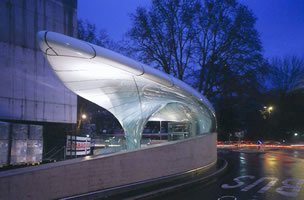
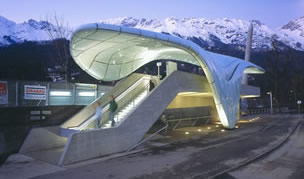
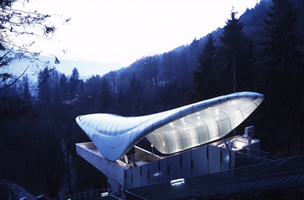
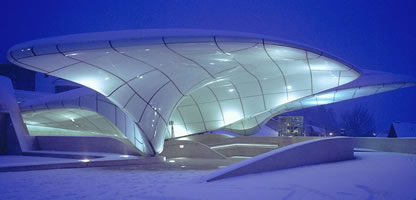
Nordpark Cable Railway, Innsbruck, Austria - Photography by Werner Huthmacher
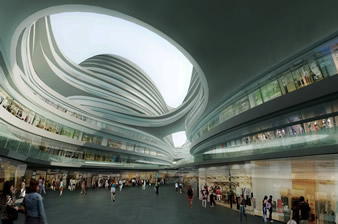
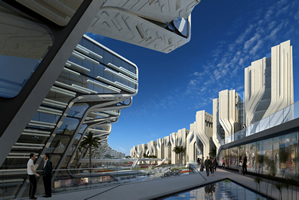
1st image: Galaxy SoHo, Beijing, China - 2nd image: Stone Towers, Cairo, Egypt
1 The “Parametricist Manifesto” was displayed on site and published in the Biennale Catalog.
2 That a progressive discourse thrives on criticism rather than statements of approval is to be expected.
3 The author has elaborated this concept in the following article: Patrik Schumacher, Style as Research Programme, in: DRL TEN – A Design Research Compendium, AA Publications, London 2008. This analogy does not imply that architecture is a science. Quite to the contrary, the author insists upon the demarcation of architecture and the design disciplines against both science and art.
4 The author has elaborated this thesis in the following article: Patrik Schumacher, Parametricism: A new global style for architecture and urban design, in Neil Leach (ed), AD Digital Cities, Architectural Design Vol 79, No 4, July/August 2009.
5 The discipline has differentiated into avant-garde and mainstream in order to escape from local maxima via high-risk test-projects. The avant-garde segment functions as a zone where high risk strategies are rewarded and a certain level of disfunctionality is tolerated.
back to WRITINGS









